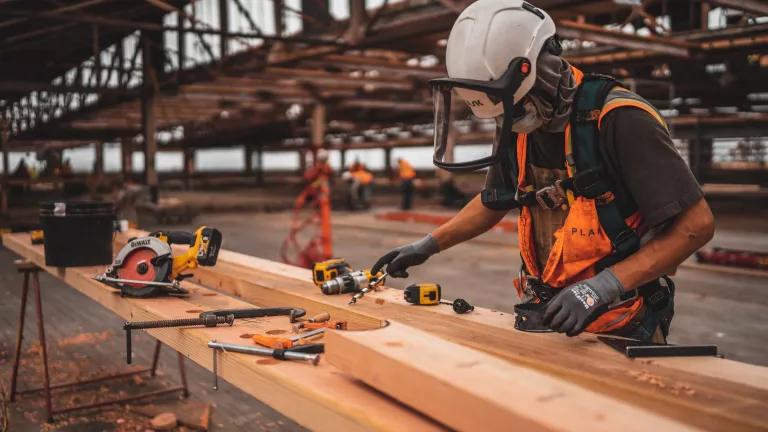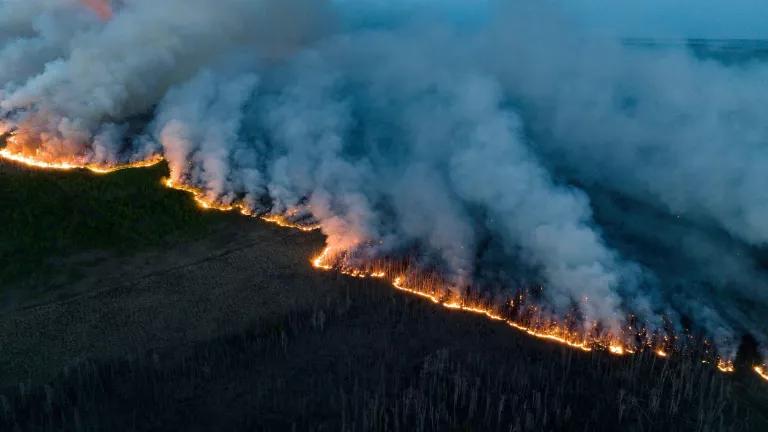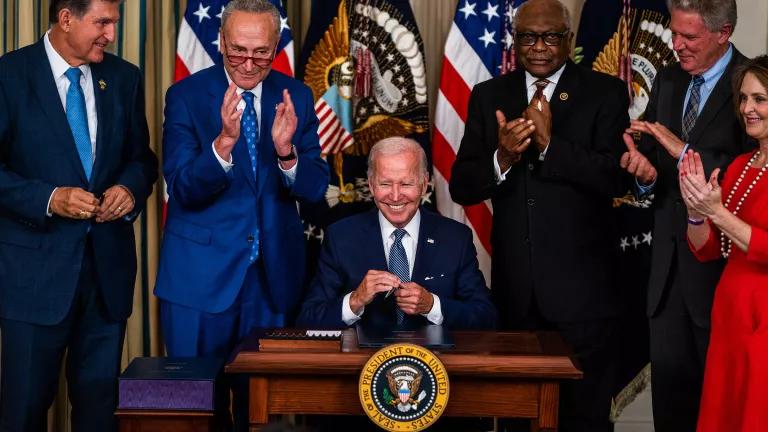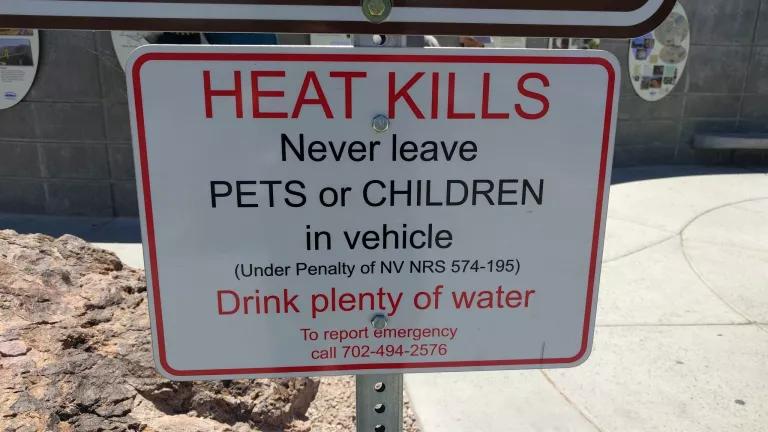OSHA Moves to Protect Workers from Climate-Fueled Heat Waves
The Biden administration is taking promising steps toward a safer, healthier future for indoor and outdoor workers.

There’s exciting news from the White House today: The Occupational Safety and Health Administration (OSHA) will begin working on a long-overdue standard to protect workers from the severe health harms of heat. Part of a broader package of actions to safeguard communities from the longer, stronger, and more frequent heat waves driven by climate change, this announcement is a critical step to ensure all workers get home safely after a hot shift.
U.S. workers are woefully unprotected from the potentially debilitating and deadly injuries and illnesses associated with extreme heat. Although employers are broadly supposed to ensure workers have access to life-saving water, rest, and shade under the federal General Duty Clause, the rule is neither detailed enough nor regularly enforced. That’s why scientists and advocates have called on OSHA since at least 1972 to develop and implement a specific heat standard. Today’s announcement finally kicks that process off with an Advanced Notice of Proposed Rulemaking (ANPR) for outdoor and indoor workplaces.
But that step isn’t enough on its own, because OSHA isn’t exactly speedy when it comes to developing new rules. The entire process can take more than a decade—and as we saw this summer, workers simply can’t wait that long for better safeguards. The administration, thankfully, is proposing a “multi-prong initiative” that includes more immediate interventions to reduce heat-related health harms.
One of those near-term interventions will be for OSHA to boost heat-related inspections; improve their response to heat-related complaints from workers, unions, and other worker advocates; and increase enforcement of the General Duty Clause.
Another will be to form a Heat Illness Prevention Work Group to “provide diverse perspectives on topics including identification, monitoring, and response to workplace heat hazards; heat emergency response plans; and worker training and engagement.” The workgroup will include at least one labor representative from OSHA’s existing National Advisory Committee on Occupational Safety and Health, and an unnamed number of new members from “a range of sectors and industries.” It will be critical for this workgroup to center workers, who have the best sense of the dangers they face on the job and how to address them.

As mentioned above, the new package of heat initiatives goes beyond workplaces to keep people safe in their homes and communities. But those measures also help keep workers safe! That’s because the harms of heat tend to accumulate through the day. Workers who labor in the heat and then return to hot housing are more likely to suffer heat-related illnesses than those who have a cool place to rest. And then there are all the workers who can be exposed to unhealthy temperatures in someone else’s home, such as home healthcare providers, communication technicians, and many more.
Today’s announcements are promising first steps toward a safer, healthier future for indoor and outdoor workers who toil in dangerously hot conditions. We look forward to working with OSHA, our labor partners, and others to ensure workers can survive and thrive in the face of rising temperatures—and help build the clean energy economy we need to limit future warming.



